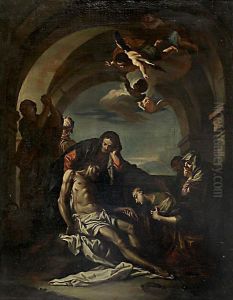Domenico Cignaroli Paintings
Domenico Cignaroli was an Italian painter of the 18th century, known for his work in the Rococo and Neoclassical styles. He was born in 1722 in Verona, into the prominent Cignaroli family, which had produced several notable artists. His uncle, Giambettino Cignaroli, was a well-respected painter of the time, and under his guidance, Domenico developed his artistic skills.
Cignaroli's work was heavily influenced by the cultural shifts of his time. The Rococo style, characterized by its ornate and decorative qualities, was giving way to Neoclassicism, which drew inspiration from the art and culture of ancient Greece and Rome. Domenico's art reflects this transition, often blending the lightness and grace of Rococo with the more restrained and classical elements of Neoclassicism.
Throughout his career, Domenico Cignaroli was commissioned to produce religious and historical paintings, as well as portraits. His ability to capture the human figure and his use of light and color were particularly admired. He worked in various cities across Italy, including Venice, where he was influenced by the works of Tiepolo and other Venetian masters.
Cignaroli enjoyed a successful career and his works were sought after by patrons not only in Italy but also from other parts of Europe. Despite this, there is a relative scarcity of information regarding his personal life, and he is not as well-known today as some of his contemporaries. Domenico Cignaroli passed away in 1793, leaving behind a body of work that continues to be appreciated for its blend of Rococo charm and Neoclassical dignity.
